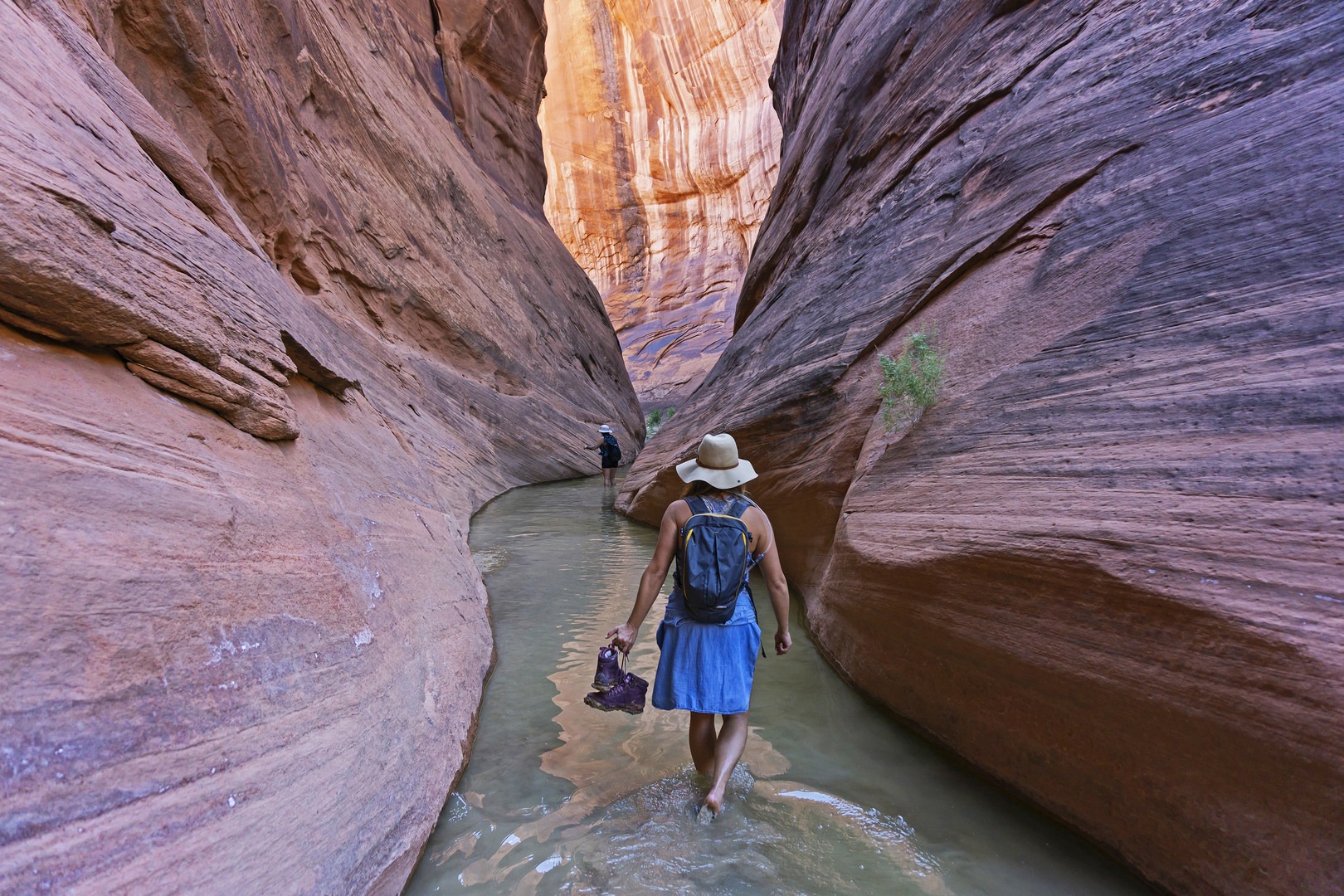You are here
Cave Point is a large and unique sandstone structure about 50 miles down the rugged Hole in the Rock Road. The unusual feature marks the entrace to a wash that leads into one of the coolest and least known sections of the Grand Staircase/Escalante National Monument.
As you start your journey east from the parking area, it looks like you are walking out into a desolate and featureless desert landscape. Slowly the wash starts to descend and the walls of sandstone begin to grow overhead. You can walk in the wash to start, but get up on the left sidewall to avoid the deep and impassable section of the first "canyon."
Once past the first deep section, you can drop down into the wash for the rest of the journey. At the first major fork, you will want to stay left and head into the east wash, not the south wash/fork. About 4 miles in, you will come across a small arch that sits atop the canyon walls high above the valley floor. There is a large cove just below it that has a perfect place to camp. The ground under the cove is perfectly flat and mostly smooth—it's a gift to backcountry campers from the desert gods.
Not far to the left of the cove and still relatively under the arch are dozens of petroglyphs from the canyon's original inhabitants. You will see many rock carvings of the many bighorn sheep that are still common in the area, whose tracks and scat are everywhere.
After camp is established, search out the handful of nearby small watering holes. Make sure to bring your filter, of course, and avoid the green pond scum and the small frogs that frequent the water. The first major cove is south facing, so the sun can get quite overbearing. There is a second cove farther down the wash that is north facing for anyone trying to get out of the harsh heat.
Ditch the gear and take a day hike down the wash to see thousand-foot cliffs and cottonwood trees. Once you begin to reach the early parts of Lake Powell, you will start working your way into the narrows. The water level changes depending on what time of year you are there and how long ago any rains occurred. As you make your way into the narrows and finally to the water table, you will need to be very careful and not descend too far. The walls get very slippery and can keep you from making your way back up and out. This is not the place to get a twisted ankle or another type of injury, so use extreme caution. There is no cell phone coverage anywhere near this area.
Do not do this hike if there are any rains in the greater area predicted. In September, the heat persists until well after midnight. Without tents to keep our packs light and avoid the heat, there were many tiny "no-see-um" bugs that did not bite but created surprisingly a loud buzz. A three-day trip kept us from bringing enough water for the duration, so we filtered our water from the many scattered small ponds. The water looked sketchy, but none of us suffered from any issues thanks to our quality filters.
I only recommend this trip for highly experienced and highly respectful outdoorspeople. Be extremely wary of the potential dangers. There will be few other hikers to assist you, which is getting increasingly rare off of Hole in the Rock Road. Please, please do not leave any trash or waste of any kind in this pristine environment. Do not do this hike in mid-summer—the heat could literally kill you.
Logistics + Planning
Current Weather: Powered by Dark Sky






























Comments
Sign In and share them.